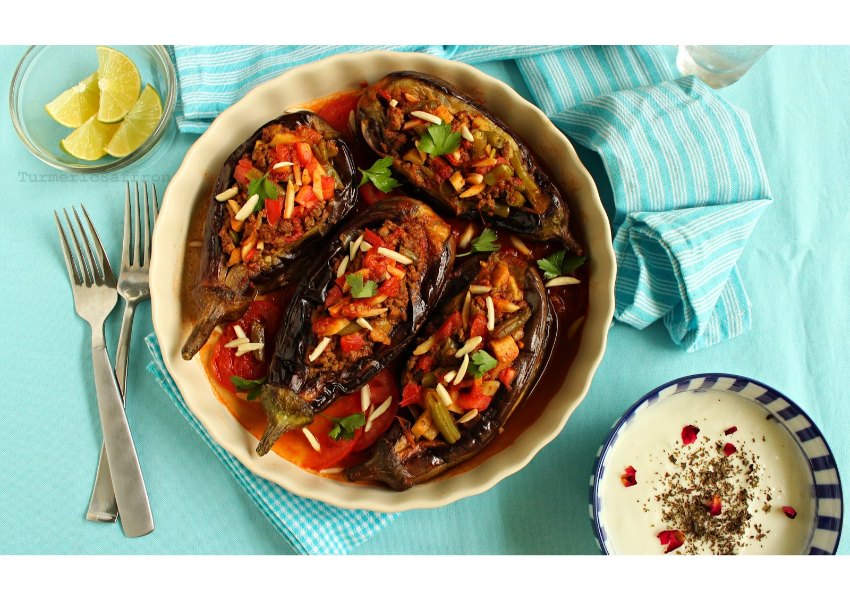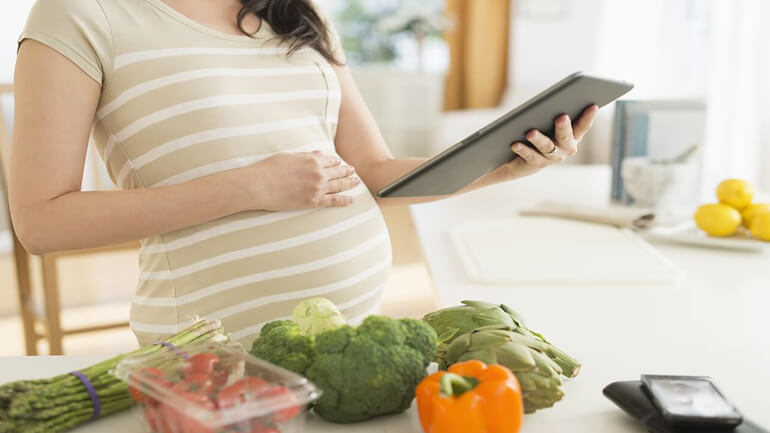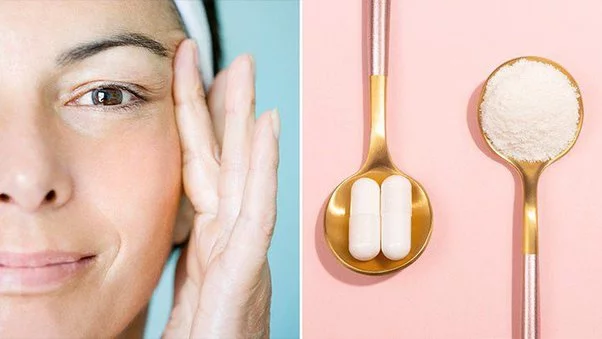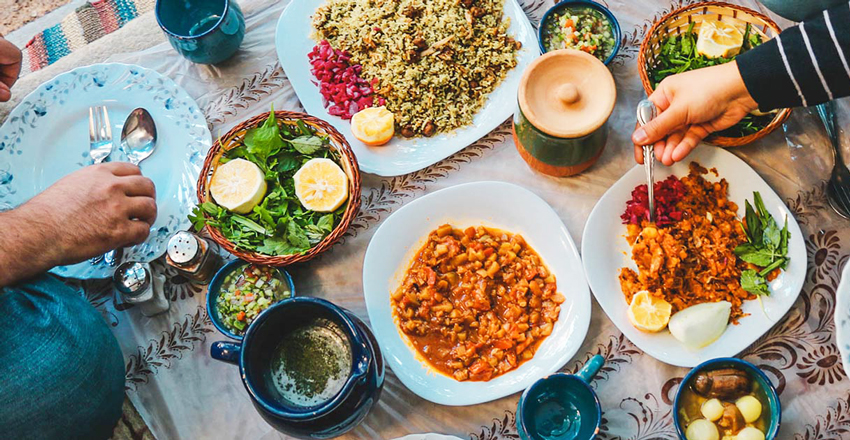What is vegan yogurt starter made of

The market is expanding rapidly; in fact, certain predictions (Bloomberg Surveillance 2015) based on market analysis suggest that turnover may surpass 26 billion dollars in 2023.
One of the culinary products made from the most popular vegetable milk in the world is the so-called soy yogurt. Yes, it’s wholesome, moral, and delicious, but how much does it go for? Soy yogurt is actually rather expensive, especially if it’s organic; single servings may cost upwards of 7 euros per kilo. This makes it a decision that’s undoubtedly sustainable for the environment and animals but not always so sustainable for everyone’s wallets.
Homemade soy yogurt is quickly revolutionary in this regard, costing only 7 euros as opposed to 2 euros (if you purchase organic soy beverage) or even only approximately 1 euro if you produce your own soy milk from soybeans.
In addition to saving money, self-production is also better for the environment because it eliminates the need for plastic containers for packaging. However, even though we try to recycle these containers properly, the industry itself currently does not support this option due to the higher costs.
- Heat 1-2 quarts of non-dairy milk to 110°F.
- Plant-based yogurt will generally not thicken on its own. To make a thicker yogurt, stir 2 teaspoons of calcium-activated pectin and calcium water into your milk and heat to 140 degrees. Cool to 110 degrees before adding the culture.
- Add 1 packet of yogurt starter and mix thoroughly.
- Pour the mixture into the culturing container.
- Cover and culture at 108-110°F for approximately 6-8 hours in a yogurt maker or similar appliance.
- After 8 hours, place a tight lid on the container and let it cool for 2 hours at room temperature.
- Refrigerate for at least 6 hours before eating.
It’s crucial to first comprehend what a “starter” is. Simply said, the starter culture is just bacteria. It is devoid of components like milk. However, a medium must be used to grow the bacteria, and that medium is frequently dairy. Since the bacteria or starter is totally eliminated from the medium before usage, this won’t be a concern for the majority of people who consume little or no dairy.
However, if you have a severe milk allergy, are worried about traces of dairy, or are fully vegan and want to make sure no dairy was used in the product’s production, seek a dairy-free or vegan label. Then, contact the manufacturer to ask about their manufacturing procedures.
Why even add the starter, one may ask? The probiotics, or beneficial bacteria, that give yogurt its distinctive tang are part of the starter culture. Even though lemon juice, which is tart and acidic, can be used to make a counterfeit yogurt, it won’t have a significant amount of beneficial bacteria.
To start a batch of homemade yogurt, you can use any one of these three items:
- Another Yogurt – One yogurt can actually serve as the beginning for another batch. Store-bought yogurt will also work if you’ve never made your own. The market is already flooded with dairy-free yogurt brands, including those made from coconut milk, almonds, oats, soy, and rice. Despite the fact that they can be pricey, you only need one to start your first batch. You may then easily save a small amount of yogurt from your initial batch and use it as a starter for the subsequent batch. Even if you use one of the other two starter options for your first batch, this approach still works nicely.
- Starter Culture – Yogurt starters are genuinely for sale. Dairy-free products like Ther-Biotic (from Klaire Labs) and Tradition Probiotics are promoted. I use the Ther-Biotic brand; you can read about their hypoallergenic policy here (it is said that they do not utilize dairy products in the production of their probiotics). Naturally, you should always confirm any changes to ingredients or manufacturing methods with the manufacturer.
- Probiotic capsules – Many probiotic brands are available as capsules. Simply crack open the capsules and add the contents to your yogurt to serve as a starting culture. Probiotics are again just bacteria that have been separated from their “host,” which may be a milk-based substance. However, if avoiding dairy is a top priority, look for products marked as “vegan” or “dairy-free” and carefully check the manufacturing procedures with the supplier.
With 10 pouches and 3 grams of culture in each pouch, Euro Cuisine All Natural Yogurt Culture/Starter is the perfect starter kit for making delicious and nutritious yogurt at home. You may make a smooth, creamy, and delicious yogurt using this French product. It is also Kosher-certified, making it acceptable for those who must follow a strict diet.
Making genuine Bulgarian yogurt at home is simple using Natural Probiotic Yogurt Starter Cultures. These freeze-dried culture sachets work well with whole milk and all types of yogurt makers. ”Lactobacillus delbrueckii subsp. Bulgaricus” and ”Streptococcus thermophilus” are among the pure blend of live active bacteria included in each sachet. One sachet makes one quart of somewhat tangy, re-cultivable plain yogurt that can be consumed right away. The cultures are created in a lab setting free of chemicals, maltodextrin, gluten, or genetically modified organisms. Natural Probiotic Yogurt Starter Cultures provide a practical and wholesome method to enjoy homemade yogurt and are suitable for vegetarians and people on the SCD diet.
You can quickly manufacture your own plant-based yogurt at home using the Cultures for Health Vegan Yogurt Starter. For those who are just starting out or who prefer a low upkeep solution, this direct-set culture is ideal. You can save time and work by only having to cultivate it once. It’s not only less expensive to manufacture up to 4 gallons of non-dairy yogurt at home than to buy it, but it also allows you the freedom to choose the non-dairy milk of your choice. It’s possible to make delectable and creamy yogurt drinks whether you like soy milk, almond milk, or oat milk. Additionally, this vegan yogurt starter is pathogen tested to ensure safety and is loaded with probiotics to support digestive health, so you know you’re getting a high-quality product.
How To Make Vegan Stuffed Dried Eggplant (Dolma)

Necessary ingredients for making curd and eggplant:
Medium eggplant, 3 pcs
Vegetable oil, 7 tablespoons
Garlic, 3 cloves, chopped
Salt, pepper and turmeric, as needed
Nuts, 1/3 cup plus extra for garnish
1 large white or yellow onion, chopped
Dry mint, chopped, 2 teaspoons
Soy curd or homemade vegan curd, ½ cup
To decorate: pomegranate seeds, walnuts, fresh mint (optional)
To serve: bread, fresh vegetables, pickles (optional)
How to prepare vegetable curd and eggplant (with vegan curd):
Curd and eggplant can be prepared in two ways. You can peel the eggplants, cut the eggplants in half vertically and put them in salt water to remove their bitterness, and after rinsing, fry them in some oil.
The second method is to spread the eggplants with the skin on the flame and put them on the heat or grill them on the grill. This method does not require oil and is healthier and more dietary. Then take their skin.
Beat and mash the eggplants well.
In a separate medium pan, fry the chopped onions in a few tablespoons of oil until golden.
Add chopped dry mint. Set aside a tablespoon for decoration.
Add garlic, a little salt, black pepper and turmeric and fry a little.
Now put the eggplants in the pan and fry a little with all the ingredients.
Chop the walnuts but not too finely.
Add the walnuts to the eggplant mixture and stir until mixed.
Finally, dilute the vegan curd with some water and add it to the mixture and put it on a little heat until your curd and eggplant are ready and there is no more water.
Garnish with mint, pomegranate seeds, fried onions and walnuts (optional) and serve with bread of your choice, vegetables and pickles.
You can decorate curd and eggplant in different ways depending on your taste and you can even make vegetable curd and eggplant as finger food in your parties and celebrations and make your table more beautiful and pleasant.
Is vegan pregnancy safe

As long as you eat a wide range of healthy plant foods and include key nutrients in your diet, you can get all the nutrients you and your baby need without eating animal products. Also, if you are a vegan who does not eat any animal products including meat, fish, poultry, eggs, dairy and honey, your pregnancy must be under the supervision of a nutritionist. In some cases, it is also necessary to use fortified foods or vitamins and supplements to ensure that you are getting enough of the nutrients you need. In the pre-pregnancy examinations, inform your doctor about your vegetarianism.
Protein
Eat several servings of protein-rich foods every day. Good sources of plant protein include legumes, soy products, nuts, seeds, and nut butters.
iron
You will have a blood test early in your pregnancy to check your iron levels. If iron levels are low, your doctor may also recommend taking an iron supplement.
A pregnancy supplement may provide some iron. But you also need to eat several servings of iron-rich foods every day. Good sources of iron include fortified breakfast cereals, whole-grain or fortified bread, fortified pasta, legumes, tofu and other soy products, and leafy greens such as spinach and beets.
Avoid drinking tea or coffee with your meals because these beverages contain tannins and polyphenols that make it harder for the body to absorb iron from plant foods. Instead, eat something rich in vitamin C, such as homemade orange juice, homemade ketchup, or a homemade broccoli rabe, as vitamin C helps your body absorb iron.
zinc or zinc
Try to eat several servings of zinc-rich foods every day. Many iron-rich foods, such as beans, soy products, fortified breakfast cereal, and whole grains contain zinc. Other good sources of zinc for vegetarians include nuts and seeds.
Calcium
Eat several servings of calcium-rich foods every day. Good sources of calcium include:
Almonds or sesame seeds that must be in your diet.
Almond milk or soy milk, fruit juice, and breakfast cereals or cornflakes that are fortified with calcium. If you are only a vegetarian and not a vegan, calcium-enriched milk, cheese, and yogurts can be a good choice for your daily calcium supply.
White beans, sugar cane molasses, chickpeas, calcium coagulated tofu. To know if tofu is coagulated with calcium, look for a calcium salt such as calcium chloride or calcium sulfate in the tofu ingredients.
Some green leafy vegetables include kale, turnip greens, Chinese cabbage, broccoli, and bok choy. Other sources such as spinach, beetroot and beetroot also contain calcium, but the body does not absorb calcium from these foods as well as the previous ones.
Vitamin D
This vitamin helps the body absorb calcium. Some types of vegetable milks, orange juice and cerlac are enriched with vitamin D. Many pregnancy supplements also contain vitamin D. If your supplement does not contain it, it is better to take a vitamin D supplement.
Vitamin B12
Vitamin B12 plays an important role in fetal brain development and is mainly found in animal products. Therefore, vegetarians need a reliable alternative source for their daily intake of vitamin B12. Plant-based sources of this vitamin include supplements, fortified foods and drinks such as soy milk and other plant-based milks, breakfast cereal, and edible yeast. If you do not eat foods containing vitamin B12 every day and your pregnancy supplement does not contain it, you may need to take a separate supplement to get this vitamin with the approval of your doctor.
Iodine
Iodine is also important for fetal brain development. Iodized salt and dried seaweed are good plant sources of iodine. If you don't eat a lot of these substances, check your pregnancy supplement to make sure it contains iodine.
DHA
DHA is an omega-3 fatty acid that promotes brain and eye development in the fetus. This substance is found in fish, fish oil and seaweed. Since it can be difficult to get DHA from sources other than fish, it's best to take an omega-3 supplement derived from seaweed and suitable for vegetarians.
Remember to always talk to your doctor, midwife or nutritionist before taking any supplements during pregnancy. In addition to eating a variety of fresh, frozen or canned fruits and vegetables or whole grain products, make sure you eat foods or supplements that provide the above nutrients that are important for a healthy pregnancy.
Does Vegan Collagen Work Get the Facts+ Natural Alternatives

Collagen is one of the most abundant proteins in the body, which plays a key role throughout the body, and is also one of the few proteins found in all body tissues. This protein plays a special and key role in muscle tissue, vein, tendon, bone, digestive system and most importantly in skin texture. Today, the role of this special protein in the skin healing process is very special.
Collagen, with its amazing structure and flexibility, is the reason for the strength and elasticity of the skin, in fact, it is this protein and its continuous synthesis and replacement that keeps the skin young. With increasing age and the beginning of the aging process, the synthesis of this protein decreases, and this factor causes the skin to loosen and create wrinkles on its surface.
But today, doctors and researchers, by discovering the complex relationships and reactions that are effective in this process, have been able to provide many ways to stimulate skin collagen production. Among these ways, we can mention hyaluronic acid injection, mesotherapy, microneedling and PRP, etc. Of course, all these methods are considered as medical methods and interventions. But it is interesting to know that there are simpler and less expensive home solutions that by using these solutions continuously and continuously, you can greatly help your skin's collagen production.
Materials containing collagen
Before presenting effective methods for increasing collagen production, we first need to know what substances contain collagen or stimulate collagen production in our skin. In other words, it is necessary to know what substances are effective in rejuvenating our skin.
Citrus
These foods are rich in vitamin C. With its special properties, this vitamin has a significant effect on stimulating collagen production in the body. You can simply help collagen production and rejuvenate your skin by adding the right amount of citrus fruits to your diet and providing your body with the vitamin C it needs. Among the best citrus fruits to help collagen formation, we can mention lemons, oranges, sweet lemons, tangerines, etc.
the vegetables
Regular and adequate use of vegetables not only provides the nutrients your body needs and minimizes the possibility of many diseases, but also by having a large amount of chlorophyll in its structure, it miraculously stimulates the collagen production of your skin. will be. In addition, vegetables with their antioxidant properties prevent many harmful reactions in your body and help your skin to be more healthy.
egg
This amazing substance rich in protein has very special properties for your body. Using enough eggs in your daily diet will initially meet the body's need for most proteins. In fact, it is the egg white that is rich in protein and nutrients. But the egg yolk contains a significant amount of collagen and will have an amazing effect on your skin's collagen production.
Be careful not to overdo it with eggs. Although the consumption of that amount has a significant effect on meeting the needs of the body and the health of your body and skin, excessive consumption of eggs will cause problems and liver diseases.
garlic
You must also be familiar with the unique and amazing properties of garlic. Along with all its countless properties in the field of helping digestion and digestive absorption, disinfecting the body and solving mood problems, and thousands of other properties, garlic has an amazing property in stimulating collagen production in the body. And so does your skin. Garlic has a lot of sulfur and due to the presence of this amazing mineral, it has the ability to detoxify and stimulate collagen production. Including garlic in your diet will be of special help to your body and skin health in the long run.
Red summer clothes
Summer vegetables such as tomatoes, red peppers, carrots, etc., have very special antioxidant properties, and in addition to protecting the body against free radicals and harmful reactions, they are a rich source of collagen and stimulate collagen production. Different tissues of the body and skin are irritated. Continuous and continuous use of these types of herbs and including them in the daily diet, in addition to meeting the mineral needs of the body, will also help in rejuvenating your skin.
gelatin
Gelatin itself is a direct and tangible presentation of collagen and its function in the body. Today, there are different types of ready-made gelatin available in the market and you can prepare it yourself. But using sheep and cow pens and extracting natural gelatin from them is a better method. By boiling this type of food, you can prepare gelatin at home. Using homemade gelatin is much stronger and more effective than gelatin available in the market.
Homemade collagen is a rich source of pure collagen and in addition to the unique properties it has for the health of the body, in the stages of skin and bone collagenization, it will cause an exemplary increase in collagen in the body and lead to the strength of joints and bones as well as skin rejuvenation.
Note that if you don't want to use animal gelatin sources in this way, you can buy ready-made vegetable gelatin from the market.
Vitamin A
Vitamin A is one of the rich sources of collagen, which, of course, will increase the activity of the collagen mechanism with its function in the body. Foods such as carrots and fish contain significant amounts of vitamin A precursors, namely carotene. These substances are converted into vitamin A during a series of reactions in the body. To get vitamin A directly, you can use chlorella, which is available in the form of cream for the skin, as well as powder and oral tablets in pharmacies.
Can we get vegetarian food in New Zealand easily

There are many restaurants with a dedicated vegetarian and vegan menu. It can also be found on the menu of almost every restaurant and cafe across the country. What’s more, supermarkets and accommodations are filled with vegetarian and vegan items. 10% of New Zealanders are vegetarian and thousands of vegetarians visit the country every year. Auckland, the most populated city in New Zealand, is the 13th most vegetarian-friendly city in the world, so you won’t be having a hard time finding your preferred food in New Zealand.
When it comes to vegetarian food, your first choice is a dedicated vegetarian restaurant, which is on the rise, as more and more people are choosing to eat less meat or no meat at all. These restaurants offer a wide variety of delicious and innovative vegetarian dishes.
If you are vegan, you should be extra careful because while vegetarian meals are commonly on menus, vegan meals are not. Chefs will be able to prepare a good vegan meal for you only if you describe your dietary preferences. In doing so, you should pay attention to these facts: fish is often considered vegetarian, oysters and fish sauce can be in curries, cheese often contains calf rennet, and wine can contain isinglass (from fish swim bladders).
Make sure you check these with the waiter before ordering your meal. It is not challenging for English-speaking tourists to explain their dietary preferences as New Zealand is an English-speaking country.
One of the very first restaurants you should consider going to is Gorilla Kitchen, a vegan restaurant that avoids using any animal products. If you’re looking to boost your health and wellness, this place suggests going for a diet that focuses on plant-based foods. They believe that this approach will help you build a stronger and healthier body.
Another good place is Aunty Mena’s Vegetarian Restaurant. If you’re looking for a tasty and affordable vegetarian meal, Aunty Mena is the perfect spot! With a diverse menu that includes vegetarian nuggets and deep-fried mushrooms as the entree, this restaurant offers something for everyone.
East St. is a vegan restaurant, cafe, and wine bar in Nelson, New Zealand. East St. is a casual place that’s suitable for large groups. It also has special features for families with children, such as reduced rates, a kid’s club, or a place for children to play. They serve a variety of vegetarian dishes, including falafel, garbanzo fingers, and chicken sandwiches.
Indian food is known for being vegetarian-friendly and there are plenty of Indian restaurants all across New Zealand. So, you will have no trouble finding a good Indian restaurant in a major city or a tourist spot.
This restaurant offers a wide range of Indian vegetarian dishes, including dosas, idlis, and curries. The food is all made with fresh, high-quality ingredients, and the service is excellent.
This restaurant specializes in chaat, a popular Indian street food. The chaats are all made with fresh, seasonal ingredients, and the flavors are simply amazing.
This international chain restaurant is known for its delicious South Indian vegetarian dishes. The menu features a wide range of dishes, including dosas, idlis, and uttapams.
Pasta or vegetable pizza as a vegetarian food is a safe bet anywhere in the world, and New Zealand is no different. While ordering, just make sure that the pasta sauce has no meat and the white sauce has no eggs (if you do not eat eggs).
If you are particular about animal rennet in cheese, then ask for cheese that is made with vegetarian rennet or leave out the cheese altogether.
This relaxed Italian eatery offers a variety of wood-fired pizzas, as well as other Italian dishes like pasta and risotto. There’s also a lovely terrace for outdoor dining.
This Neapolitan pizzeria is known for its light and airy crusts and its generous toppings. The pizzas are cooked to perfection in a wood-fired oven.